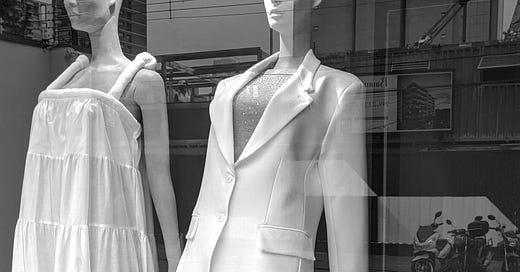Examine the opening paragraph of Amor Towles’ novella Eve In Hollywood, and see what strikes you:
In the dining car, he was seated again with the pretty young lady with the scar. She was reading that new detective story—the one with the strangled brunette on the cover. A page-turner, they called it, though you wouldn’t know it from the pace she was turning them. In all likelihood, she had just picked it up in the station to fend off friendly conversation. But he could understand that. Sometimes you just wanted to be left to yourself, even when it was for three thousand miles.
In the very first sentence of this excerpt we already have a few conclusions. We’re on a train. There’s a man and a woman. Their interaction began before the sentence began. All of this background comes in one sentence, long before we’re alert to the story, which isn’t a bad start for any narrative. Just try and place two characters and a setting and the linearity of time into a dozen words—and then take an early lunch if your writing day begins with such concision.
What I find most curious about this paragraph, however, is the perspective, that most vital element in art, the place from which the story is told. Unless you’re studying closely, the perspective is usually implicit, it emerges, outside the readers’s awareness, even though it is such a crucial element to storytelling. When someone talks about a novel that they’re enjoying, if you ask them about the perspective—whether the story is told directly in the first person, for instance—they’ll often hesitate, unsure about the answer. In some ways this is remarkable and almost hard to believe. But not knowing the perspective of a story is similar to not knowing whether a film scene uses one or two cameras, which is, in fact, something that most viewers don’t know despite how much that decision about cameras shapes a film. In art there’s often a conceit about perspective: it is overlooked, or ignored, even though it is the window that we look through whenever we view art.
Keep reading with a 7-day free trial
Subscribe to Desk Notes by Charles Schifano to keep reading this post and get 7 days of free access to the full post archives.




